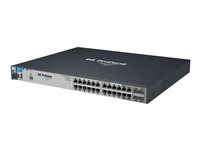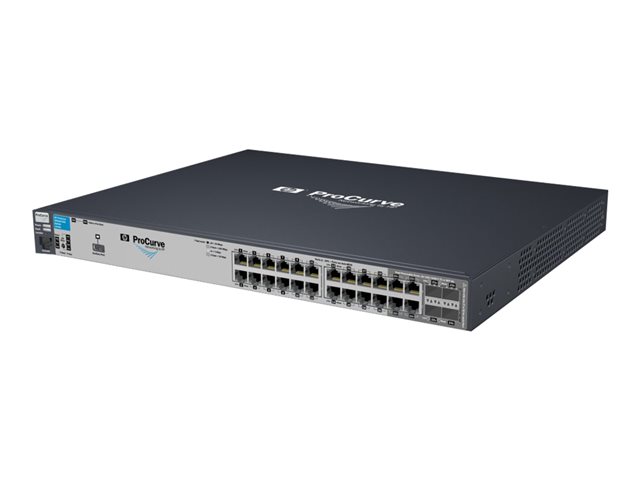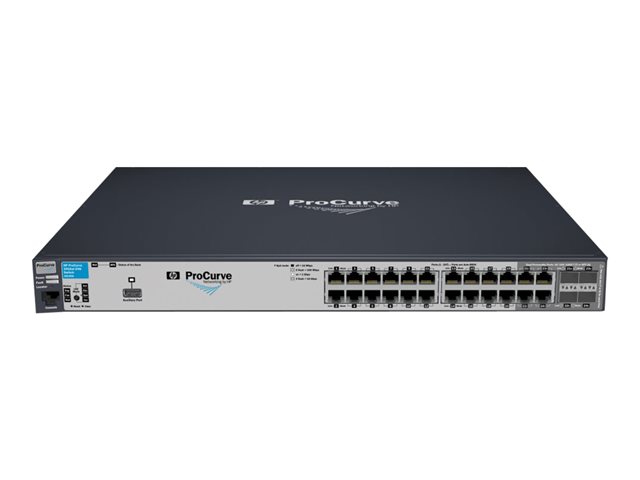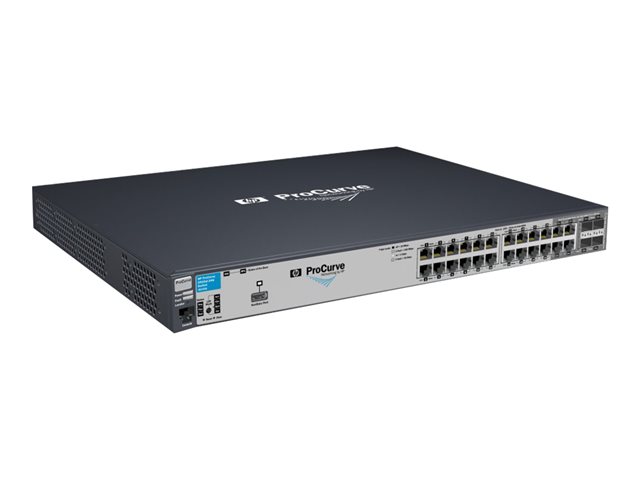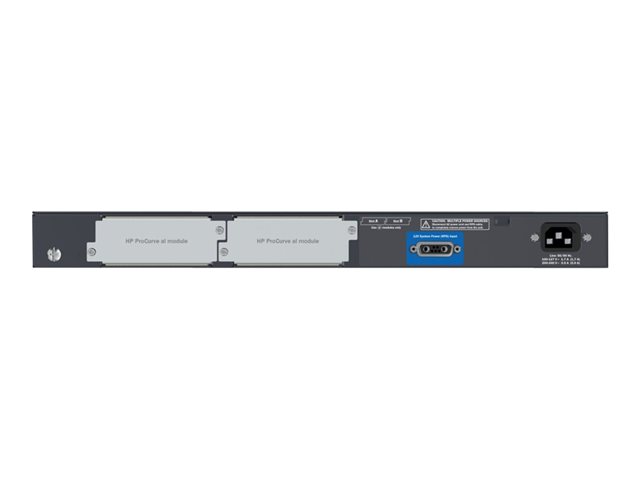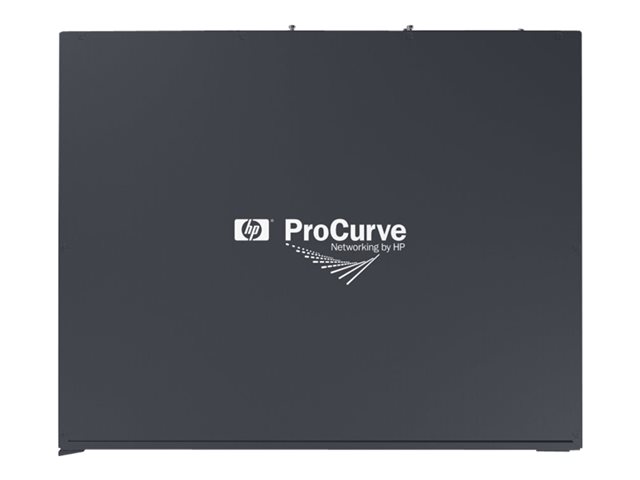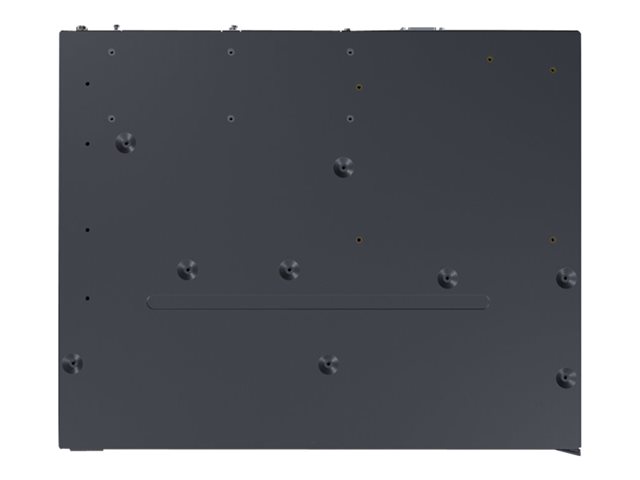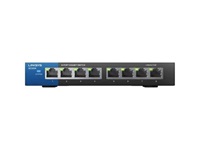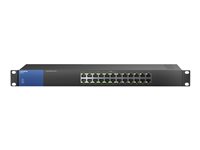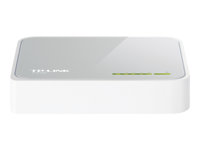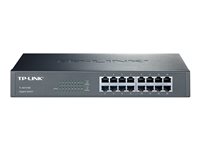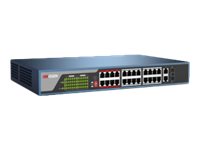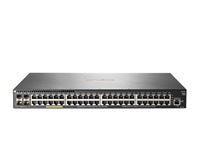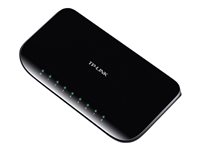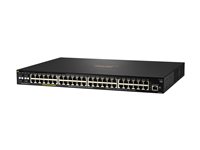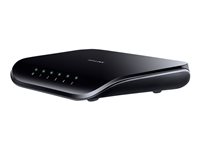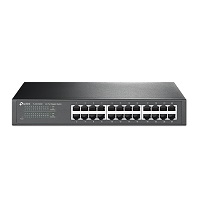Product description
The HPE 2910al switch series consists of four switches. Each switch has four dual-personality ports for 10/100/1000 or mini-GBIC connectivity. Together with static and RIP IPv4 routing, robust security and management and enterprise-class features, the 2910 series is a cost-effective, scalable solution for customers who are building high-performance networks. These switches can be deployed at enterprise edge and remote branch offices, converged networks, and data center top of rack.
Product features
- Selectable queue configurations
Selectable queue configurations increase performance by selecting the number of queues and associated memory buffering that best meet the requirements of your network applications. - IEEE 802.1s multiple spanning tree
IEEE 802.1s multiple spanning tree provides high link availability in multiple VLAN environments by allowing multiple spanning trees. It also provides legacy support for IEEE 802.1d and IEEE 802.1w. - RMON, XRMON, and sFlow
RMON, XRMON, and sFlow provide advanced monitoring and reporting capabilities for statistics, history, alarms, and events. - Uni-Directional Link Detection (UDLD)
Uni-Directional Link Detection (UDLD) monitors a link between two switches and blocks the ports on both ends of the link if the link goes down at any point between the two devices. - Command authorization
Command authorization leverages RADIUS to link a custom list of CLI commands to individual network administrator's login. It also provides an audit trail. - Dual flash images
Dual flash images provide independent primary and secondary operating system files for backup while upgrading. - Multiple configuration files
Multiple configuration files allow multiple configuration files to be stored to flash image. - Friendly port names
Friendly port names allow assignment of descriptive names to ports. - Find-fix-and-inform
Find-fix-and-inform finds and fixes common network problems automatically, then informs administrator. - Troubleshooting
Troubleshooting is an ingress/egress port monitoring enables network problem-solving. - Access control lists (ACLs)
Access control lists (ACLs) provide IP Layer 3 filtering based on source/destination IP address/subnet and source/destination TCP/UDP port number. - Identity-driven ACL
Identity-driven ACL enables implementation of a highly granular and flexible access security policy and VLAN assignment specific to each authenticated network user. - Dynamic ARP protection
Dynamic ARP protection blocks ARP broadcasts from unauthorized hosts, preventing eavesdropping or theft of network data. - DHCP protection
DHCP protection blocks DHCP packets from unauthorized DHCP servers, preventing denial-of-service attacks. - Port monitoring for network threats
Port monitoring for network threats provides sampled port traffic to detect threats and mitigate threats at the port where the threat originated. - Source-port filtering
Source-port filtering allows only specified ports to communicate with each other. - RADIUS/TACACS+
RADIUS/TACACS+ eases switch management security administration by using a password authentication server. - Secure Shell (SSHv2)
Secure Shell (SSHv2) encrypts all transmitted data for secure, remote command-line interface (CLI) access over IP networks. - Secure FTP
Secure FTP allows secure file transfer to/from the switch, It also protects against unwanted file downloads or unauthorized copying of switch configuration file. - Secure Sockets Layer (SSL)
Secure Sockets Layer (SSL) encrypts all HTTP traffic, allowing secure access to the browser-based management GUI in the switch. - Port security
Port security allows access only to specified MAC addresses, which can be learned or specified by the administrator. - MAC address lockout
MAC address lockout prevents configured particular MAC addresses from connecting to the network. - Switch management logon security
Switch management logon security can require either RADIUS or TACACS+ authentication for secure switch CLI logon. - STP BPDU port protection
STP BPDU port protection blocks Bridge Protocol Data Units (BPDUs) on ports that do not require BPDUs, preventing forged BPDU attacks. - USB Secure Autorun
USB Secure Autorun deploys, diagnoses, and updates switch using USB flash drive. It works with secure credential to prevent tampering. - STP root guard
STP root guard protects root bridge from malicious attack or configuration mistakes. - Custom banner
Custom banner displays security policy when users log in to the switch. - Per-port broadcast throttling
Per-port broadcast throttling selectively configures broadcast control on heavy traffic port uplinks. - IP multicast snooping and data-driven IGMP
IP multicast snooping and data-driven IGMP automatically prevents flooding of IP multicast traffic. - LLDP-MED (Media Endpoint Discovery)
LLDP-MED (Media Endpoint Discovery) is a standard extension of LLDP that stores values for parameters such as QoS and VLAN to automatically configure network devices such as IP phones. - IEEE 802.1AB Link Layer Discovery Protocol (LLDP)
IEEE 802.1AB Link Layer Discovery Protocol (LLDP) is an automated device discovery protocol for easy mapping by network management applications. - PoE/PoE+ allocations
PoE/PoE+ allocations support multiple methods to allocate and manage PoE/PoE+ power for more efficient energy savings. - Traffic prioritization (IEEE 802.1p)
Traffic prioritization (IEEE 802.1p) allows real-time traffic classification into eight priority levels mapped to eight queues. - Layer 4 prioritization
Layer 4 prioritization enables prioritization based on TCP/UDP port numbers. - Class of Service (CoS)
Class of Service (CoS) sets the IEEE 802.1p priority tag based on IP address, IP Type of Service (ToS), L3 protocol, TCP/UDP port number, source port, and DiffServ. - Port mirroring
Port mirroring enables traffic on a port to be simultaneously sent to a network analyzer for monitoring.




